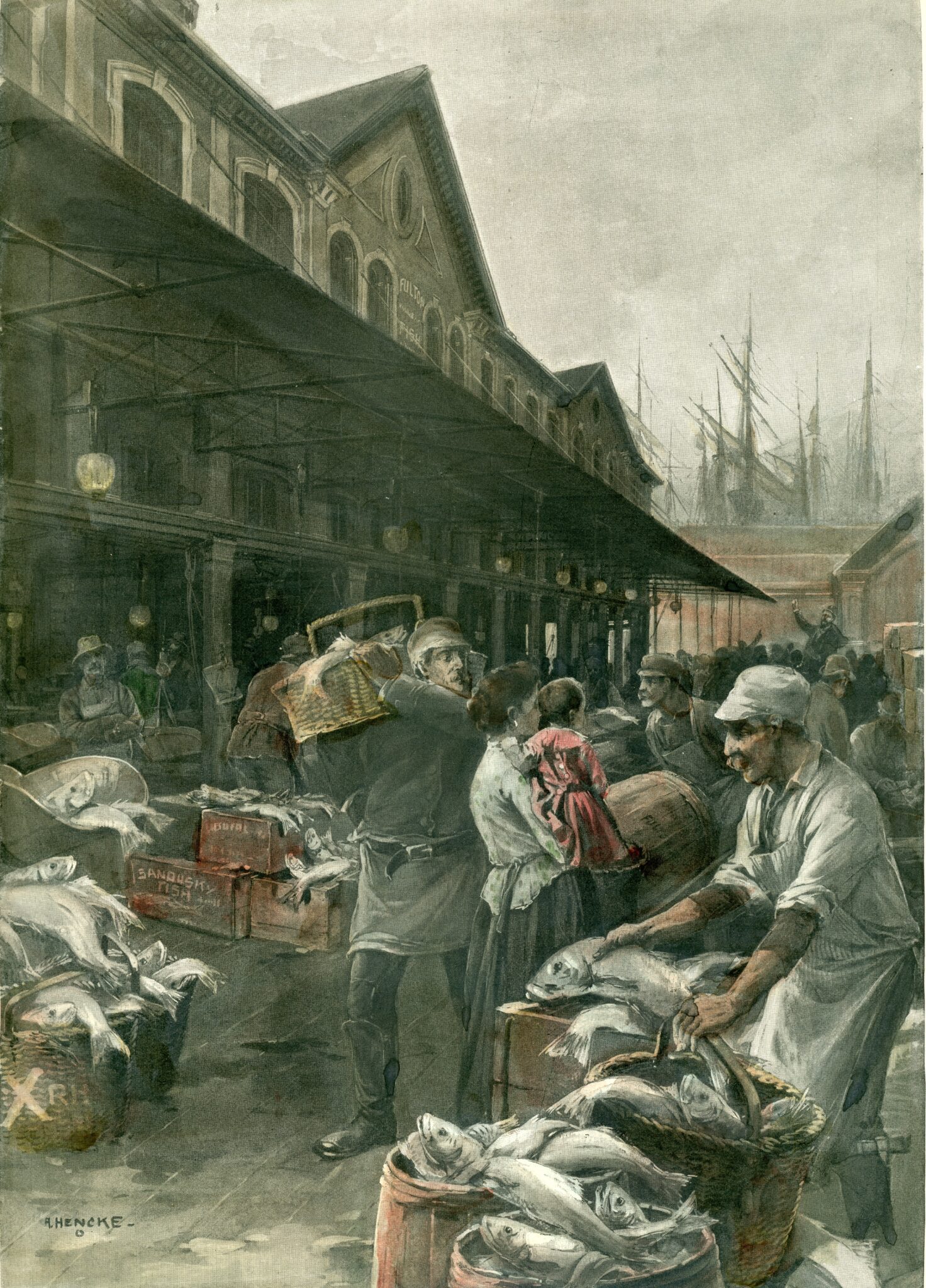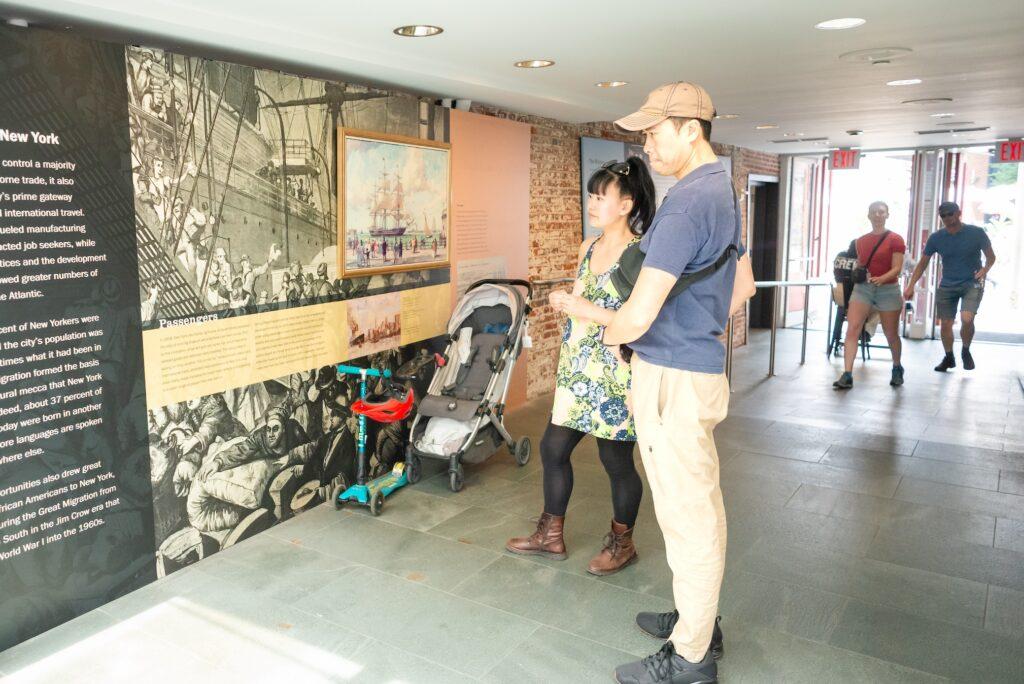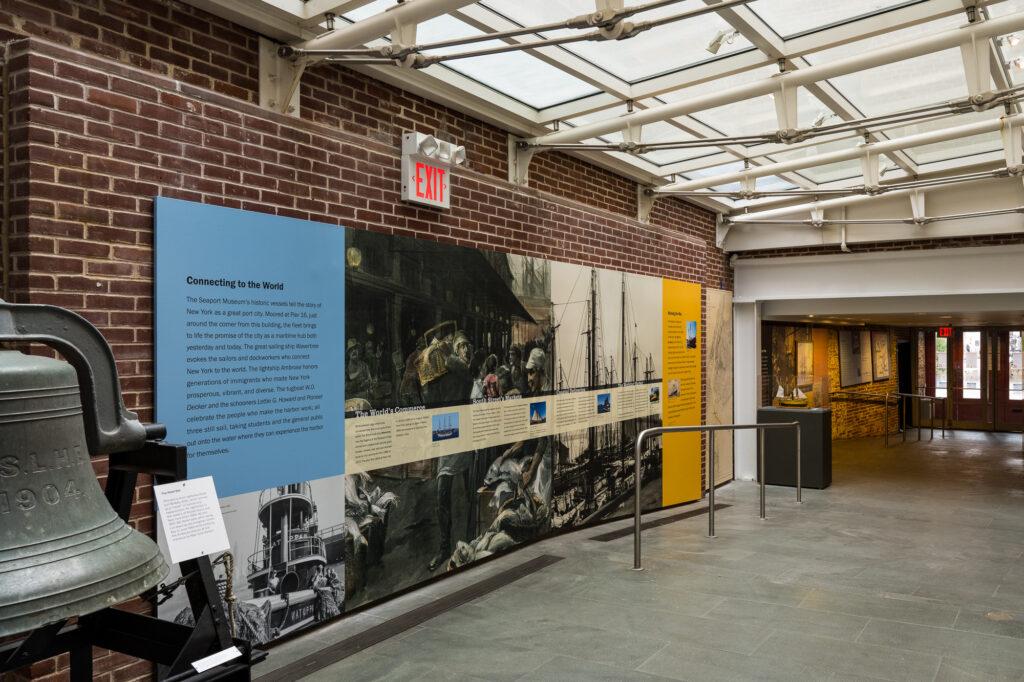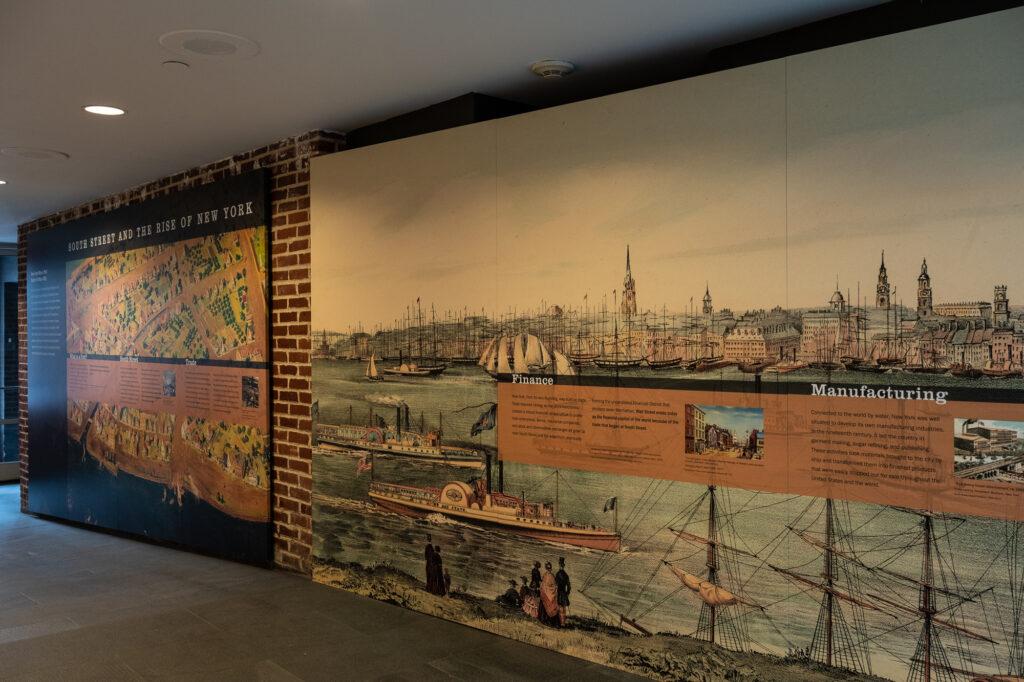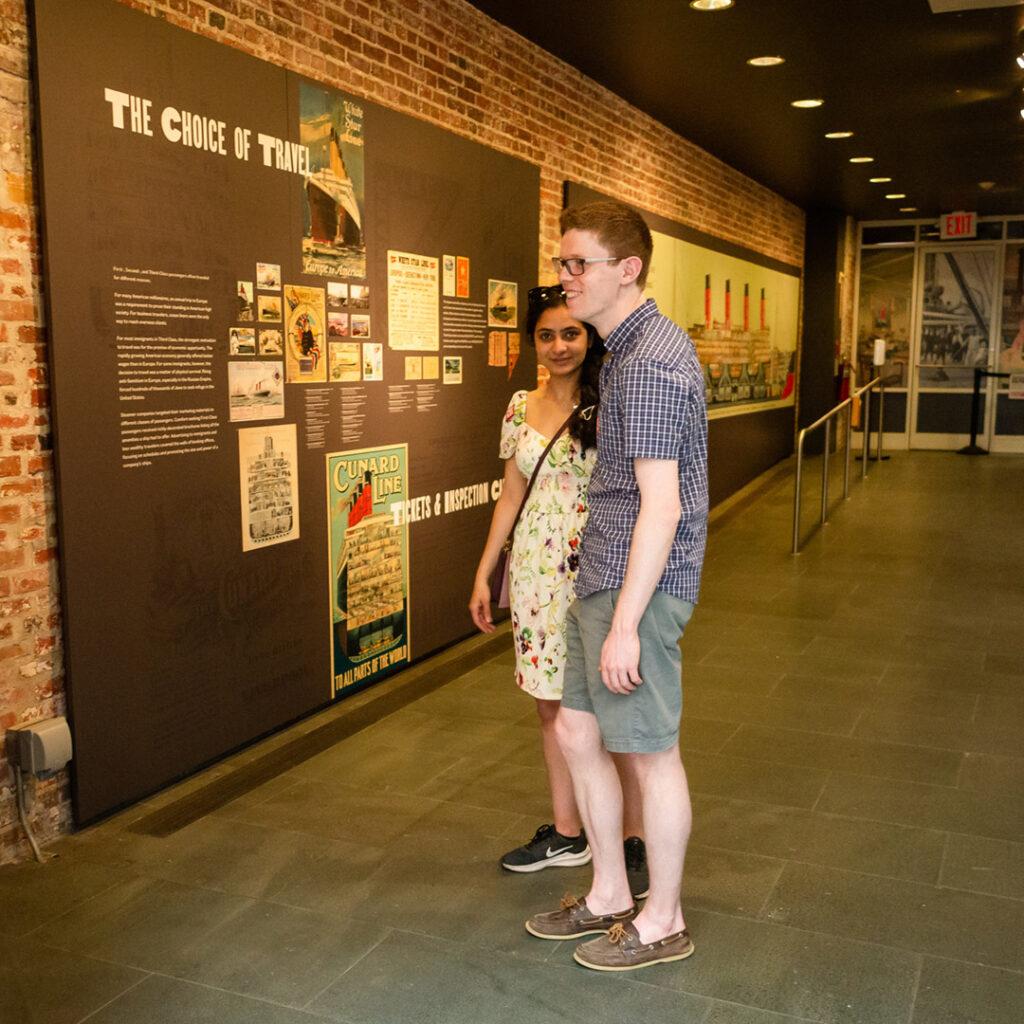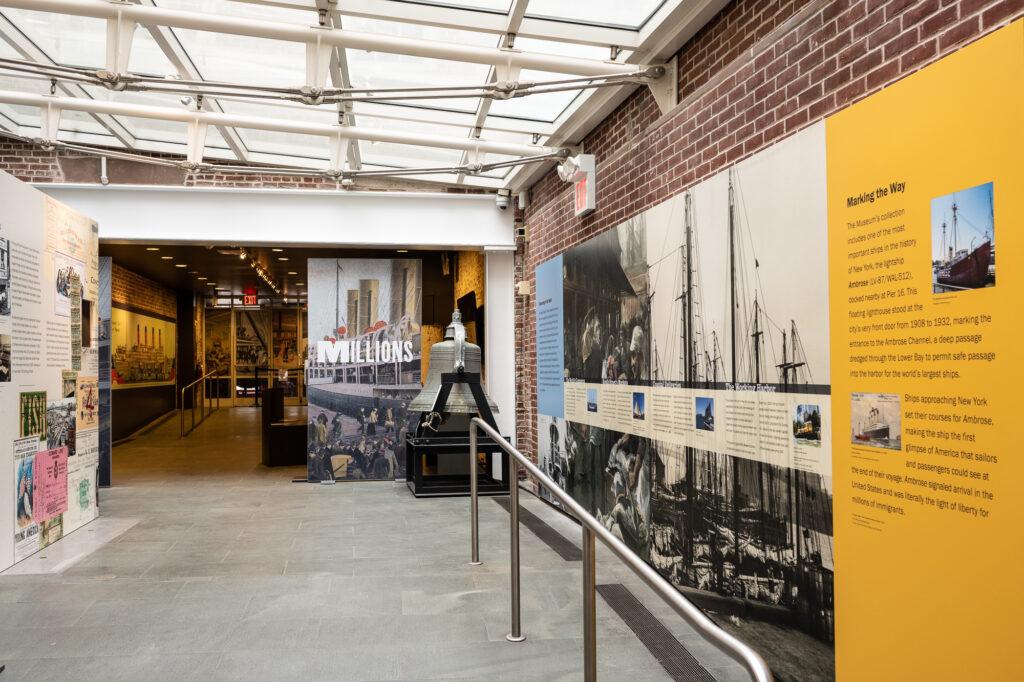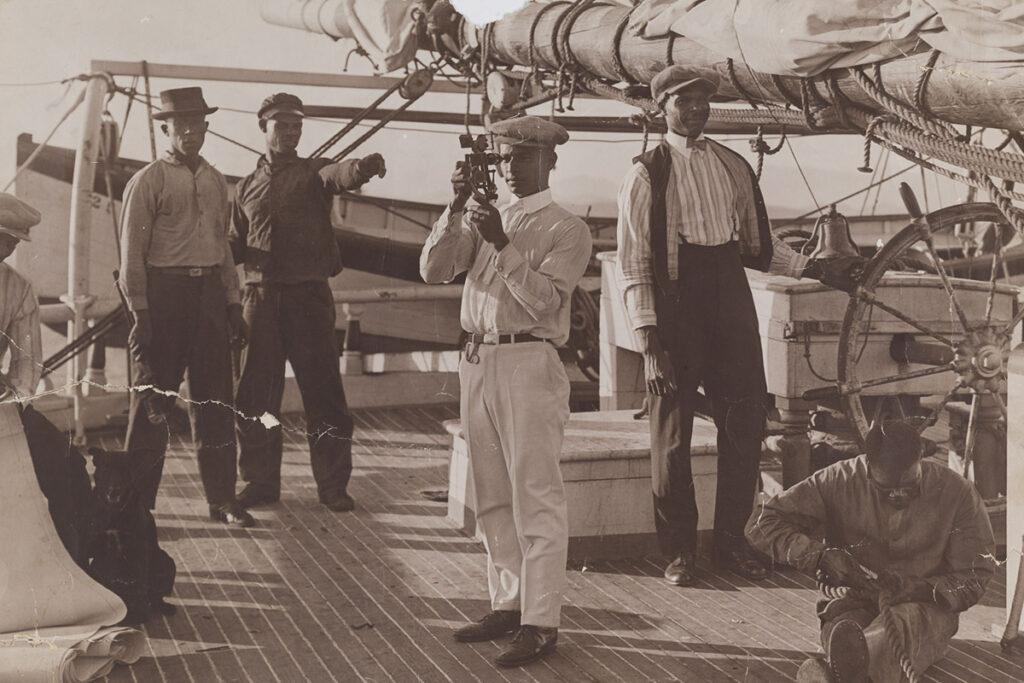Wednesday–Sunday | 11am–5pm | 12 Fulton Street | Included in Admission
Explore the critical role played by the Seaport and South Street in securing New York’s place as America’s largest city and its rise to become the world’s busiest port by the start of the 20th century in this informative display featuring large-scale reproductions of paintings, lithographs, and photographs all related to the history of the Port of New York in the 19th century.
Your visit to South Street and the Rise of New York begins with a contemporary aerial photograph depicting New York Harbor, one of the greatest natural harbors in the world, and continues with large images from the Museum’s collections illustrating the impact of New York’s ports, seaports, and hubs. As you walk through the gallery, uncover how New York’s first port was right here, along the East River, where Dutch colonizers and their English successors sheltered their ships.
Throughout the display, you will see how maritime trade increased in the small early city and landowners began to fill in the river’s edge to make room for new commercial enterprises. This transformation from water to land allowed for South Street to become the right-of-way fronting the East River, and expanded the waterfront further into the river.
As you continue through the history of the seaport in this single-gallery exhibition, you will see how, until the Civil War, South Street was the city’s principal seaport. It was here that ships, in both international and domestic trade, tied up directly across the street from warehouses, markets, hotels, and tradesmen’s shops. The port of New York, centered on South Street, received more than 4,000 vessels from foreign ports alone in 1860.
Access to the display is included in museum admission tickets. Advance registration to guarantee your space is encouraged. Walkups can be accommodated as space allows. You may access South Street and the Rise of New York at any time from 11am to 5pm on the day of your visit. Last admission will be 4:30pm. Access to the galleries in Schemerhorn Row is at street level and wheelchair accessible.
Gallery Views
More About The Exhibition
Housed within a first-floor gallery of the historic 1810–1812 Schermerhorn Row, South Street and the Rise of New York gives a wonderful introduction to the Seaport Museum and the exhibitions and ships you will explore throughout your visit.
The display highlights:
- Schermerhorn Row, the block of warehouses and offices that stand on man-made land reclaimed from the East River between about 1797 and 1807 showing imagery of the surviving guest rooms from Rogers’ Hotel and Dining Saloon.
- South Street Seaport Museum’s fleet of historic ships that tell the story of New York as a great port city through their connections to world commerce. This includes the 1885 tall ship Wavertree and the 1908 lightship Ambrose, coastal deliveries with the 1885 schooner Pioneer, South Street’s markets with the 1893 schooner Lettie G. Howard, and the working harbor with the 1930 tugboat W.O. Decker.
- Bowne & Co., a contemporary re-interpretation of one of the many printing offices that flourished in Lower Manhattan in the 19th and 20th centuries with a display of printing ephemera from the Museum collections, and three boxes of Tri-Arts printing types.
- A bell from the lightship Relief LV-78/WAL-505, similar to one on board the Museum’s lightship Ambrose.
The display was curated by Michael R. Harrison, the Obed Macy Research Chair at the Nantucket Historical Association, with the assistance of Martina Caruso, Director of Collections and Exhibitions at the Seaport Museum. Exhibition design and art direction by Helen Riegle of HER Design, and Christine Picone, Senior Designer of the Seaport Museum.
